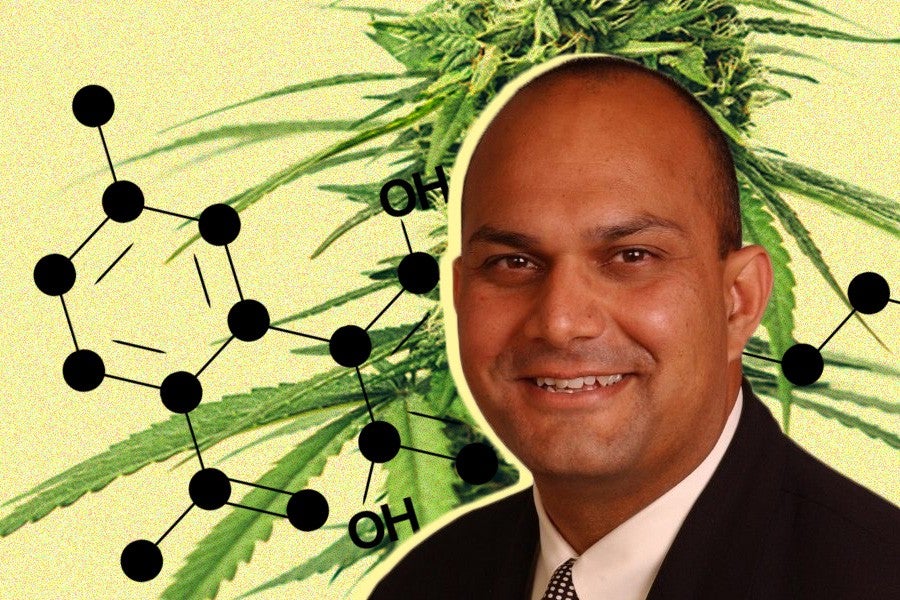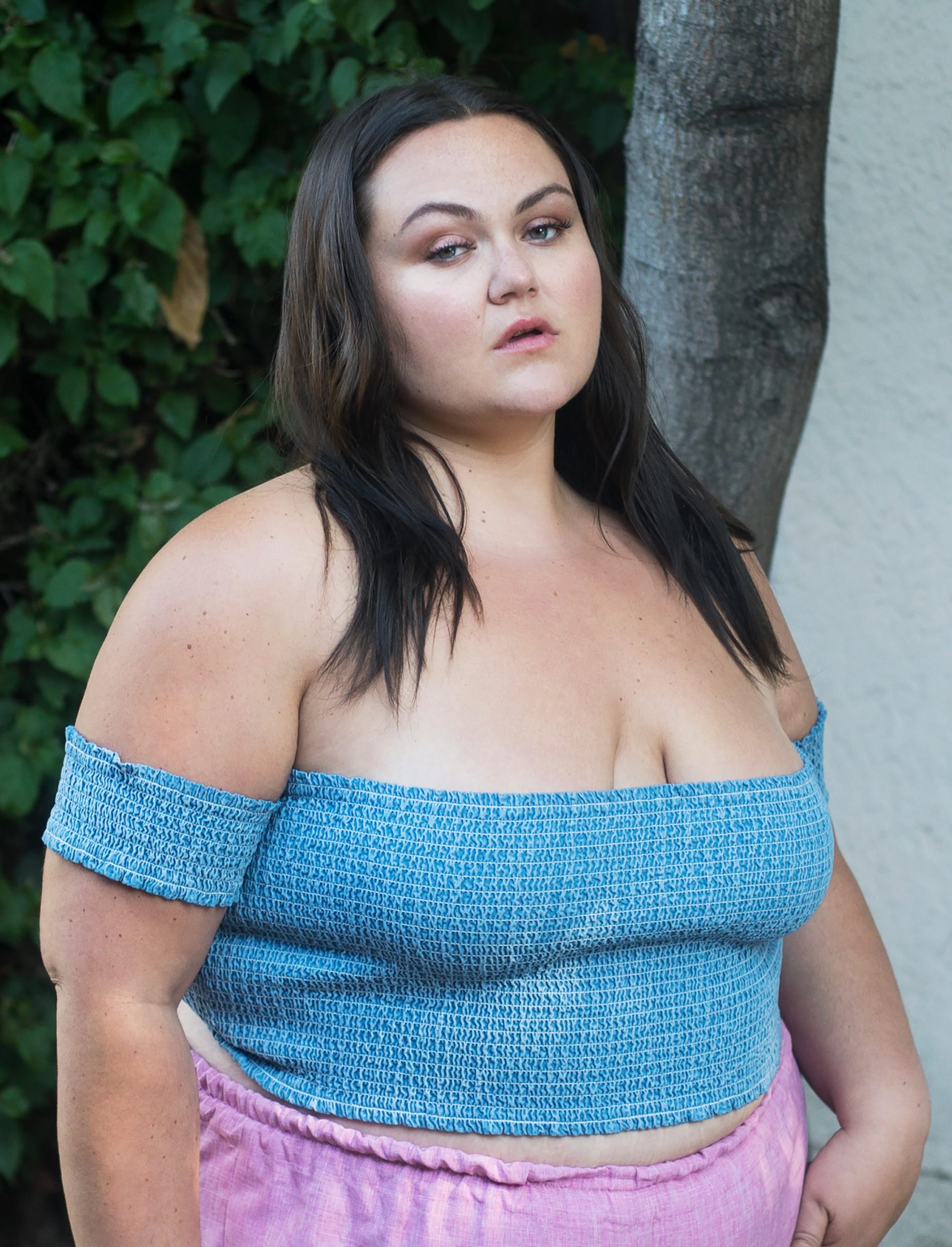For the last seven years, Sanjeev Sharma, a board-certified cardiothoracic surgeon based in the Pacific Northwest, has centered his practice around hemp’s potential as plant medicine. He even has a cannabidiol (CBD) supplement company, Seyvah, that sells specifically formulated tinctures for conditions like insomnia and gastrointestinal dysfunction, with forthcoming products aimed at treating everything from anxiety and weight loss to neurological disorders.
That said, given its strong anti-inflammatory properties, the most common use of CBD is still pain relief. In theory then, more CBD use might mean less opiate use, especially since Sharma contends that cannabis is the least addictive drug in the world. (It’s a double bonus, too, in that CBD can be used as a treatment for opiate addiction.)
Pets can apparently experience pain relief and other health benefits from CBD as well. Sharma is currently working on his own version of hemp-based concentrates for cats and dogs. Which raises the question: Is it legal to get my dog high?
That, though, raises an even more fundamental issue — the lack of general knowledge about what CBD really is.
Cannabis sativa is a dioecious plant, meaning it’s gendered male and female. The female part is rich in THC, the best-known cannabinoid (the chemical compound we usually associate with weed) and terpenes (essential oils). This female part is what many of us are used to smoking.
But the male plant — the hemp — is what Sharma uses to make his extractions. These male plants are rich in CBD, as opposed to the female’s THC. That’s not to say THC-heavy strains totally lack CBD; it just means that the presence of cannabinoids is significantly lower. For example, OG Kush, a classic strain, typically has 0.3 percent CBD as compared to 24 percent THC. And unlike THC, CBD doesn’t get you high. In other words, it won’t cause you to flunk a drug test or set off alarms at the airport. Additionally, it’s been deemed harmless enough that you can buy it online or in boutiques as well as send it through the mail.
Over the last few years, Sharma has treated and taught more than 30,000 medical cannabis patients. His speciality is connecting them to the specific strains and terpenes they could benefit from. In doing so, he’s created a complex medical directory that legitimizes the specificity of treatment within this type of plant medicine.
I recently spoke to him about how best to use CBD, the ways in which he formulates his products and why he considers CBD the next superfood.

What made you want to pursue homeopathic medicine after so many years as a Western medical doctor?
The biggest reason is that I was tired of the bureaucratic malaise. I was sick of having to jump through hoops in order to do the right things for patients. That’s not why I got into medicine in the first place. And I’ve always been a proponent of medical cannabis, so for me, it was natural to explore the many ways the plant can be used as medicine. Today, I consider myself someone who integrates both Western and holistic approaches into my practice. I try to use the best of both worlds.
More largely, the number one issue for us as we age is inflammation. There are ways to decrease inflammation through our diet, so I talk a lot about nutrition with my patients. But CBD is a great way to decrease inflammation, too. In general, many of my patients use cannabis in addition to standard, Western medical treatments. For example, I see patients going through chemotherapy and radiation that use oil concentrates for pain and nausea, or to help strengthen their immune systems as they fight off cancer.
Who are the tinctures you sell meant for?
Right now, our tinctures are meant for people who have mild to moderate issues with pain, insomnia and gastrointestinal stuff. The RLF, or relief, formula is for pain. SNZ, or snooze, is for people with insomnia. It doesn’t knock you out like an Ambien; it helps you get into deep REM sleep, preventing the wakeful periods most people will have during the night, especially older people. For people in their 40s, it can help you fall so deep into REM that you can dream again.
Our third formula is GTX, which I came up with after witnessing my son suffer from irritable bowel syndrome as an infant and toddler. All the antibiotics he was given affected the normal bacteria in his GI tract, so I wanted to figure out another mode of treatment for people with IBS, Crohn’s disease or colitis.
How did you learn to use strains and terpenes so specifically?
My experiences with specific patients account for a lot of my research. Listening to them talk about what they feel and what they’ve tried is what’s taught me the most. I’m able to talk to my patients about what strains they’re using to treat certain conditions. Later on, I research those strains and figure out why they give us certain results. Basically, I create and maintain profiles of different strains and terpenes and then use them to find hemp-based solutions to common health problems.
This also brings me to what I don’t like about the marijuana industry’s shift toward concentrates, now that dabbing is commonplace. When you go from the flower — with all the cannabinoids and terpenes working together in concert — to the concentrated oil or wax, you’re getting these high amounts of THC without necessarily getting the benefits of those terpenes.
Terpenes are usually associated with the smell and taste of weed. If that’s true, how do they help out health-wise?
Each strain smells and tastes differently, given its unique combination of terpenes. One such terpene is Linalool, which is great for anxiety and stress. Another is pinene, which is a natural bronchodilator for our lungs, meaning it actually opens up our airwaves. But generally speaking, we’re just beginning to learn the effects of all the terpenes and their profound effects on our bodies.
Why is CBD a better medicine for some of your patients than THC?
If you have chronic pain issues and you smoke cannabis to treat them, THC will help you for about an hour and a half or so, but it won’t address the underlying inflammation. That’s where other cannabinoids, like CBD, come into play.
Why did you want to make your own CBD line?
The more I learned, the more I wanted to provide products with reliable, reproducible effects. We ship throughout this country and to other countries where CBD products are legal, like throughout most of Europe. Here in the U.S., THC and CBD are still federally considered Class I drugs, but in England, CBD is recognized as a medicine. This designation as a serious drug in the U.S. prevents us from properly investigating cannabinoid use. Lots of people know about their benefits, but a lot of the needed testing isn’t happening because of this classification.
That’s interesting, given how inferior we typically would imagine medical marijuana programs in the U.K. to be than the ones in say, California.
They’re definitely inferior on the THC side of things. But we have plenty of room to improve our legislation in this country, too. Our cannabis laws differ state to state, even among states with the same types of policies, so we could use more education and industry standardization.
Is it safe to begin using CBD without consulting a physician? A lot of people I know have picked up tinctures and just started their own regimens.
Most doctors, even homeopaths, aren’t going to have a whole lot of knowledge about CBD, unless they’ve gone out of their way to learn about it. So as with all supplements, my main piece of advice is to know who your producers are: How are they procuring their cannabis? How is their product grown? How is it processed? All of the hemp products I sell on my site are tested twice, rigorously, to ensure there are no issues with pesticides or other microorganisms. Our processors maintain best practice standards; I know because I’ve visited their farms in order to observe that myself.
Why are you making a CBD formula especially for pets?
CBD products are wonderful for pets, especially as they age. Quite a few animals will struggle with inflammatory conditions, even hair loss, as they get older. Your pet isn’t going to become confused or high, but it will help things like their arthritis. Different breeds have different issues. Large animal breeds, like mastiffs, often have hip issues. CBD offers profound relief because it’s anti-inflammatory. I have a 7-year-old pitbull and German Shepherd mix, and he’s a lot slower than he was when he was three. With CBD, he’s able to run and play without so much stiffness.
Also trendy: Bars serving CBD-infused cocktails. Is it safe to mix CBD and alcohol? Similarly, is using CBD in addition to ingesting traditional cannabis, THC products, safe?
There shouldn’t be any issue incorporating it into cocktails, because there’s no “high,” other than medicinally feeling well because the CBD will decrease inflammation and pain. You will usually feel a sense of wellness.
As for you second question, CBD is actually an antidote for THC toxicity. Once Colorado changed from a medical to a recreational cannabis state, the Northwestern School of Medicine did a study where they looked at the uptake in tourism related to the cannabis industry. It had created a huge increase in emergency room visits from out-of-state patients, due to cannabis ingestion. And although CBD isn’t used in a lot of these emergency rooms, the best treatment for this sort of cannabis toxicity is CBD.
Speaking of emergency rooms, I think a lot of people lie to their doctors about using cannabis, even in states where recreational cannabis is legal, because of drug stigma and fear that having such a thing on your medical record is undesirable. Should you tell your doctors you smoke? Or vape, use CBD or whatever?)
Western physicians are often under the impression that dealing with cannabis at all, even in terms of acknowledging that their patients use cannabis, is somehow dangerous for them or their practice. That’s unfounded — especially because the relationship between doctors and our patients is protected. Not to mention, patients deserve to be transparent with their doctors and get their questions answered. Over the next four or five years, though, I think there will be more acceptance for cannabis-associated medications and products. Just this weekend, for instance, I made a house call at a large, state-run nursing facility where they’re allowing a patient to use my products.
Where would you like to see CBD go in terms of access and entrepreneurship?
I’d love to see CBD properly classified, so that accessing it could be as simple as purchasing other supplements at Whole Foods or Target. The ultimate goal is to provide as many people as possible with safe and effective products that improve their quality of life.
What are you working on with Colorado School District 49?
I’m working with them to present a set of 20 questions for parents and kids regarding medical marijuana. Hopefully this questionnaire will get approved in the next four to six weeks. The questions are a way to determine which children are using medical cannabis and for what diagnoses, how effective it is and what the school can do to support them. I’m interested in educating both students and parents on how to use cannabis to treat specific issues. Too many children get placed on pharmaceutical drugs too early, and pharmaceuticals are over-prescribed in general. In my mind, that’s unfortunate.

